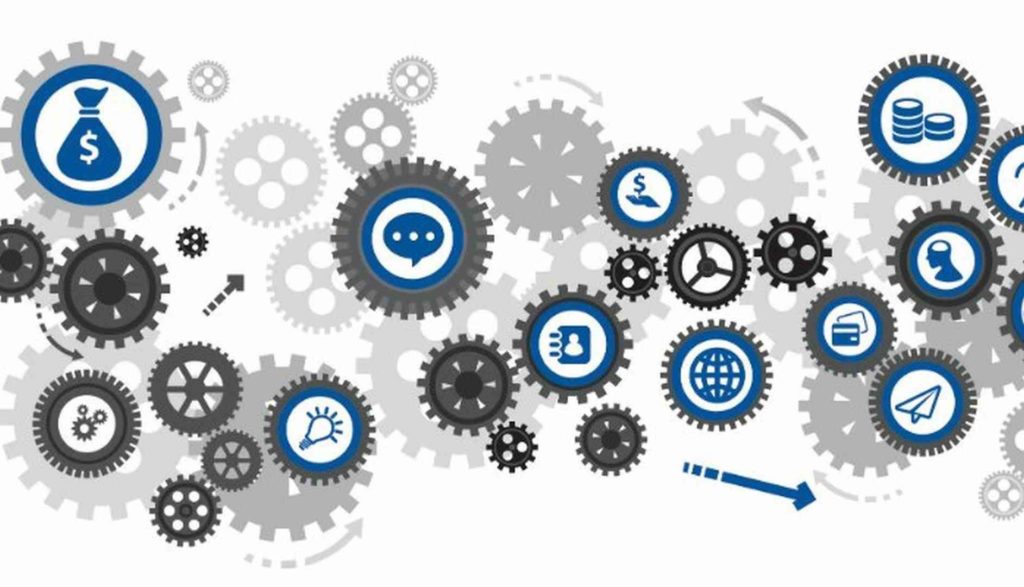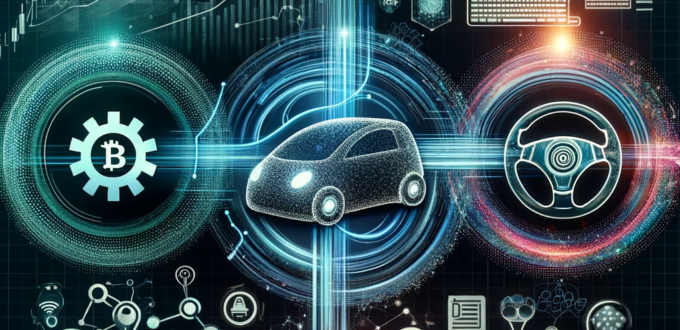Milano, Giugno 2020 – Si conclude con successo presso il Gruppo FIRE il progetto per l’efficientamento della riconciliazione degli incassi da BONIFICI e BOLLETTINI con la piattaforma K LINX.
Is a smart digital reconciliation possible?
È possibile una riconciliazione digitale e… smart? – Data Manager Online
In the financial and administrative jargon, “reconciliation” can take different meanings; In this article I’ll focus on the meaning about money collection, i.e. the linking of financial flows with the respective titles of credit, and the recording of such collection in a management system. This is an intrinsic process of the active cycle of companies, but it is also common in the finance world realities that deal with specific forms of credit, such as FACTORING and ADVANCES on INVOICES.
Analyzing in greater detail the financial and accounting entities the reconciliation deals with, we can see, first and foremost, the financial flows and, more specifically, the component concerning the revenues: sums received from the customers of a company to pay off a good or service.
The other fundamental entity is constituted by the titles of credit: documents univocally coded by companies, attesting the right to demand, within a certain date, a certain sum of money from a debtor: invoices, bills, taxes, etc.
The challenge
Reconciling, in practice, means answering to two simple questions: Who pays? What is he/she paying?
It is possible to answer without significant complications, if that the financial flows are composed of structured forms of payment: those that, in relation to the subject of payment, report in a positional way the identifiers that lead directly to the title of credit: Sepa Direct Debit, MAV, RIBA, pre-compiled bulletins and PagoPA (the Italian Payment System for the Public Administration) are examples of structured forms of payment.
Answering becomes more complex when the financial flows are composed of unstructured forms of payment, in which the payer’s informations and the purpose of the payment are provided in free text fields. The SEPA or SWIFT transfers and the infamous hand-written white bulletins are examples of unstructured forms of payment. For these, it is necessary to analyze the paying party to identify the debtor, then comprehend the meaning of the purposes of payment, and extract from these the object of payment.
Possible approaches
The realities that carry out manual or semi-automatic reconciliation face significant costs, since they have to assemble teams and resources dedicated to this purpose. These costs persist even if one relies on companies that perform outsourced administrative services, including reconciliation. The goal is to be effective, to reconcile correctly and on time, but often the backlog is cumbersome or the solution not efficient.
An alternative is the digitalization of the process that automatically solves repetitive activities, generating efficiency: we are in the field of DIGITAL RECONCILIATION.
The majority of the adopted solutions at a global level are of the “traditional computing” kind: algorithms hard-wired with known cases to successfully correlate payments and titles. But this is the limit of “traditional computing”: the known cases, because the presence of payments with uncommon characteristics requires the supervision of an operator to solve the unknown or doubtful case.
Luckily, in support of solving real life problems, software technologies of cognitive computing are taking hold, that emulate human reasoning to solve problems with high variability: we are talking about Artificial Intelligence, and more precisely of artificial neural networks: software with performances definitely better that traditional algorithms. In fact, in those situations in which a neural network has to solve unknown cases, it is able to give a correct answer by approximation, having been trained on a large number of cases from which it has drawn the experience that will allow it to generalize. Just as our brain will allow us to read this sentence without too much effort: “Aoccdrnig to a rscheearch at Cmabrigde Uinervtisy, it deosn’t mttaer in waht oredr the ltteers in a wrod are”, a properly trained neural network will be able to understand correctly the content of a text field.
With artificial intelligence, the ambition is to minimize the cases that need human supervision, thus increasing the level of efficiency, with an additional very interesting ability of self-learning.
This is the SMART DIGITAL RECONCILIATION.
Mario S. Farris – Fintech Entrepreneur
* * *
K Linx is the software platform of the innovative Milanese startup of the same name, devoted to the automatic reconciliation of payments. It deals in the automatization of those processes typically carried out manually in the back offices of companies or in the financial world.
K Linx is already successfully used in top credit institutes, financial firms and other enterprise companies. The startup is successfully experimenting with artificial neural networks to improve the platform, surpassing the already excellent performances obtained with traditional computing algorithms.
http://www.klinx.it
#artificialintelligence #startups #accountreceivables #reconciliation #riconciliazione #efficientamento #incassi #pagamenti #cashmanagement #reconciliation #accountreceivables #payments #fintech #startupstrategies
Intelligenza Artificiale e Innovazione: Dialogo con Mario Farris di K Linx
Intelligenza Artificiale e Innovazione: Dialogo con Mario Farris di K Linx
L’intelligenza Artificiale è in continua espansione e sempre più settori abbracciano la tecnologia che è nella sua primavera. Perciò, parliamo degli ambiti di applicazione attuali e di quelli futuri con Mario Farris, CEO di Workgroup Consulting e K-Linx.
Alessio Sergi: Benvenuto su “Pensa Forte”, Mario. Sono entusiasta di esplorare con te l’uso dell’intelligenza artificiale soprattutto nel mondo aziendale e bancario ma anche in ulteriori contesti. Puoi approfondire i suoi utilizzi in Italia?
Mario: L’IA ha molteplici applicazioni. Nel marketing, viene utilizzata per interazioni tramite chatbot e analisi del cliente. Nel campo della sicurezza, identifica intrusioni e frodi. In sanità, è preziosa per diagnosticare malattie e nel settore finanziario aiuta nel credit scoring e analisi di mercato.
Alessio: Come K Linx si inserisce in questo contesto?
Mario: In K Linx, abbiamo iniziato con l’analisi dei flussi di incasso, ma stiamo ampliando il nostro raggio d’azione. Siamo interessati all’analisi di potenzialità di acquisto dei clienti e all’estrazione di informazioni da documenti non strutturati, usando reti neurali per la riconoscimento di entità.
Alessio: Quali sono i vantaggi dell’IA per le aziende?
Mario: L’IA rende efficienti processi ripetitivi, liberando risorse umane per compiti di maggior valore. Ad esempio, nel recupero crediti, gestisce la riconciliazione dei pagamenti, permettendo al personale di concentrarsi sulla interazione con i clienti.
Alessio: Credi che adottare l’IA possa essere un vantaggio competitivo per le aziende?
Mario: Decisamente. L’IA migliora l’efficienza e riduce i costi, rendendo un’azienda più competitiva. Purtroppo, alcune aziende mostrano resistenza, forse per mancanza di lungimiranza.
Alessio: Parliamo di Elon Musk e della sua scelta di usare l’IA per la guida autonoma. Qual è la tua opinione?
Mario: Musk affronta una sfida imponente con la guida autonoma. La sua decisione di passare da radar a camera vision è innovativa. Nonostante le difficoltà, credo che avrà successo.
Alessio: E sull’uso dell’IA in ambito sanitario, come per i vaccini?
Mario: L’uso dell’IA nella produzione di vaccini è fondamentale. Può accelerare la ricerca e sviluppo, riducendo i tempi in emergenze come la pandemia.
Alessio: Infine, come vedi il futuro dell’IA nel mercato globale?
Mario: Il mercato dell’IA è destinato a espandersi enormemente. Stiamo passando dalla fantascienza alla risoluzione di problemi reali. L’IA migliora la qualità della vita.
Alessio: Grazie, Mario, per queste intuizioni. È stato un piacere parlare con te.
Mario: Grazie a te, Alessio. Sono felice di aver partecipato.
Innovazione nel Fintech: Intervista a Mario Farris di K Linx con Alessio Sergi del canale YouTube “Pensa Forte”
Innovazione nel Fintech: Intervista a Mario Farris di K Linx con Alessio Sergi di “Pensa Forte”
Alessio, con il suo canale divulgativo, tratta di i
Mario, imprenditore con esperienza ultraventennale nel settore IT, opera nella consulenza e nella produzione di soluzioni IT per l’efficientamento di processi.
[Alessio]: Ci troviamo nel vibrante Fintech District di Milano per discutere di innovazione, intelligenza artificiale, e payment intelligence con Mario Farris, il fondatore di K Linx. Benvenuto, Mario, e grazie per averci concesso questa intervista.
[Mario]: È un piacere essere qui, Alessio.
Utilizzo dell’Artificial Intelligence i K Linx
[Alessio]: Mario, molti vedono l’intelligenza artificiale come una realtà del futuro. Come la utilizzate attualmente in K Linx?
[Mario]: L’intelligenza artificiale per noi è una realtà quotidiana. La usiamo per ottimizzare l’operatività delle aziende, in particolare per la riconciliazione degli incassi e la contabilizzazione dei flussi di pagamento. Questi componenti AI rispondono a due domande chiave: chi sta pagando e per cosa, affrontando sfide complesse dovute alla natura non strutturata dei dati di pagamento.
Payment Intelligence
[Alessio]: Parliamo di “payment intelligence”. Cosa intendi esattamente?
[Mario]: La payment intelligence riguarda la gestione dei pagamenti digitali, specialmente quelli non strutturati come bonifici e bollettini postali. In Italia, purtroppo, i bollettini postali rappresentano ancora una quota significativa dei pagamenti. Il nostro obiettivo è semplificare questi processi per le aziende.
[Alessio]: Quali sono le difficoltà nel comprendere i testi di un bonifico e individuare chi sta pagando e per cosa?
[Mario]: In apparenza, può sembrare semplice, ma è una sfida di cognitive computing. Affrontiamo l’imprevedibilità totale dei testi, che variano enormemente in chiarezza e completezza.
[Alessio]: E qui interviene l’intelligenza artificiale di K Linx…
[Mario]: Esatto. La nostra AI affronta situazioni diverse, dalle descrizioni chiare a quelle vaghe, come “saldo vostre competenze”, che potrebbero riferirsi a molteplici partite aperte.
Altri ambiti di utilizzo dell’Artificial Intelligence
[Alessio]: Oltre al settore dei pagamenti, ci sono altre aree dove applicate la vostra intelligenza artificiale?
[Mario]: Sì, il nostro approccio ha attratto l’interesse del settore bancario. Assolviamo automaticamente ad operazioni delicate come la gestione dell’anticipo su fatture e nel credito al consumo.
[Alessio]: L’idea di usare l’intelligenza artificiale nel back office amministrativo come è nata?
[Mario]: La scintilla è scaturita dalla lettura di uno studio di un psicolinguista, che mostrava come il cervello umano identifichi le parole nonostante gli errori. Abbiamo collegato questo principio alla riconciliazione di testi nei pagamenti.
[Alessio]: Quali sono state le reazioni iniziali di fronte a questa idea innovativa?
[Mario]: Inizialmente, c’era perplessità. Le reti neurali sono solitamente usate per predizioni di mercato, non per la riconciliazione dei pagamenti. Ma questo ha reso la sfida ancora più intrigante.
Addestramento di una rete neurale artificiale
[Alessio]: Come funziona l’addestramento della rete neurale in questo contesto?
[Mario]: Addestrare una rete neurale significa insegnarle a riconoscere scenari corretti, come identificare il soggetto pagante da una stringa testuale. E qui, la rete neurale dimostra la sua efficacia, anche nelle situazioni più ambigue.
[Alessio]: Infine, quali sono i tuoi obiettivi futuri per K Linx?
[Mario]: Stiamo esplorando nuovi ambiti come la gestione del rischio di credito e la liquidazione dei sinistri, e ci stiamo avvicinando allo studio della blockchain, che vediamo rilevante in ambiti specifici come la liquidazione sinistri.
[Alessio]: Grazie mille, Mario, per queste intuizioni sul futuro dell’intelligenza artificiale nel fintech.
[Mario]: Grazie a te, Alessio.
BNL
Milano, Gennaio 2019 – BNL sceglie la piattaforma di riconciliazione K LINX per il PAYMENT MATCHING dell’ANTICIPO FATTURE.
Il nuovo cliente BNL rappresenta un grande passo per la nostra azienda, poiché è il primo caso in cui la piattaforma di riconciliazione K LINX viene utilizzata in modalità SaaS.
Il progetto ha visto il passaggio in produzione in tempi brevi con piena soddisfazione del cliente.
Pur in presenza di molteplici conti correnti di soggetti presentatori, la piattaforma K Linx è in grado di associare i bonifici in ingresso ai vari conti con le rispettive fatture che sono state anticipate, grazie alla flessibilità del suo engine che è in grado di adattarsi alle esigenze del cliente in modo tale che possa sfruttare al meglio i processi di riconoscimento anagraficodei soggetti paganti ed il riconoscimento dei numeri di fattura (pattern discovery) eventualmente presenti nella causale descrittiva. Altre strategie collaterali possono in ogni caso ricondurre il pagamento alla relativa fattura.
Il valore aggiunto che abbiamo portato con K Linx è stato un significativo efficientamento dei processi di backoffice dell’area crediti nel riconoscimento dei bonifici da accreditare su conti ordinari oppure da porre in gestione per lo scarico delle fatture anticipate.
Fintastico Interview with Mario Farris, founder of K Linx.
K Linx is the platform for automated, efficient and simplified reconciliation management. The mission of K linx team is to combine elements belonging to different groups through appropriate connection keys in the world of payments.
Today we present an interview with Mario Farris, founder and managing director of K Linx, an innovative fintech startup in the world of money collection.
Hello Mario, tell us a little about yourself and your professional experience.
I have been working in IT for about 25 years, full of enthusiasm and passion. Before this, I spent a few years in the Italian Navy, a life-changing experience of great professional training.
Since 2000 I have set up with two partners an IT services company, Workgroup Consulting, focusing on the banking and insurance world; we deal in software development, design consultancy, and the resale of third-party solutions in the fraud detection business. For some years now, following a successful project that has consolidated our skills in the areas of payments, master data management and credit risk, we decided to invest in creating a market solution dedicated to the specific purpose of automatic reconciliation of money collection.
From this decision K Linx took shape, first as a flagship solution for the Workgroup products, and since last year as an innovative startup of the same name.
What is K Linx and how does it work?
K Linx is essentially a software system that links entities belonging to two different sets. If we imagine that the incoming financial flows constitute the first set, and the credit instruments the second set, creating links between these entities is the same as to reconcile the receipts.
The credit titles, as generically indicated in K Linx, can be composed of any entity for which we expect future payment: invoices, bills, taxes, penalties etc. The heart of the system is a series of algorithms whose task is to answer, automatically, to two simple questions: Who is paying? What is he/she paying?
From these two answers, the system then determines, from a qualitative point of view, whether it is a full or partial payment, within a specific tolerance.
K Linx was born as a traditional computing software based on Microsoft technologies; the main task of the startup is to migrate the core components of the system towards cognitive computing technologies. We are already deep in this project, as we have designed an artificial neural network able of answering, with definitely better performances than the traditional algorithm, to the first of the two questions mentioned above. Let’s not forget, in fact, that no matter how sophisticated an algorithm may be, there are cases that cannot be entirely managed by it: the so-called doubtful cases that require the supervision of a human operator. With artificial intelligence our ambition is to minimize these cases, to further increase the level of automation and efficiency.
Who is your target?
Unlike from what we thought at the beginning of this adventure, our main customers consist of realities from the financial world: Banks and Financial Companies.
Banks use K Linx in the area of business credit, in particular on the invoice advances. The banks have an interest in monitoring the payments of the invoices with a liquidity advance, both for the refund and for the management of the credit risk.
The financial companies have an interest in the automatic reconciliation of the payments from the loan instalments, in particular those that come in unstructured form.
Generally speaking, our targets include all the realities that have credit consisting of incoming payments. For example, one of the fields in which we are certain there is a need for automation and in which we are eager to propose our platform is that of utilities companies, that consists of large invoices by definition.
What are the benefits in using your solution?
The realities that carry out manual or semi-automatic reconciliation, must face significant costs, since they must form dedicated teams for this purpose. These costs persist even if one relies on companies that perform this kind of administrative services.
With the adoption of our platform, instead, the additional value we offer is that of making an otherwise time- and cost-consuming process more efficient. Another important benefit is the complete governance of receipts, in order to be able to completely manage the dynamics, costs and drawbacks of this crucial component of a company’s life cycle.
How many members currently compose your team?
Currently the team consists of 5 technicians coordinated by 1 research and development manager, 1 delivery manager and 1 sales manager for the market proposition. We are looking for new resources, in the field of both Microsoft technologies and artificial intelligence. The main characteristic of the people we are looking for, in addition to an adequate basic technical skill, is their passion, the desire to accept challenges and to be architects in creating something fintastic.
What are unstructured payments?
I have made reference several times to unstructured payments: we are talking about those forms of payment that are not based around specific positional references, but rather have text fields that can be freely filled. The SEPA or SWIFT transfers are an example of unstructured payments, or better yet, the infamous handwritten bulletins.
Now put yourself in the shoes of the companies that receive daily cash flows: if it is MAV, RIBA, SDD, the reconciliation is carried out by consolidated processes, based on unique identifiers that directly lead to the credit title. Think instead of wire transfers or handwritten bulletins: you need human intervention to correctly interpret them, i.e. repetitive and manual operations. Our platform automatically resolves these operations, thus freeing the resources working on theserepetitive and low-value activities.
What are your figures currently?
Although we are still a small reality, we have relevant references in the sectors I mentioned, finance in particular. Last year we have processed about 5 million bank transfers, achieving remarkable matching performances, in some cases equal to 90% of perfect reconciliation.
Which actors or realities would you like to build a partnership with, and why?
There are two areas in which we are very likely to form partnerships:
- the technological field, for a reciprocal exchange of expertise and already implemented components, to be mutually “time to market” on certain aspects; we have recently joined the Fintech District, in which we trust we can develop this kind of synergies.
- the commercial environment, if the potential partner creates an acceleration effect on the market. In this regard we have just concluded an agreement with a foreign company for the development of our offer on a European level, in particular in the Fintech capital cities.
What are the developments in your pipeline? What are you planning to launch, and with what timing?
Our roadmap is very tight; in fact, this year we will be launching several components redesigned with artificial neural networks, as well as developing APIs that will allow us to expand our offer, making it more granular and therefore better suited to the needs of companies, especially those in the financial world. We will be in the “Salone dei Pagamenti” in November for the second time. Stay Tuned!
K Linx – Fintech District Interview
K Linx is an INNOVATIVE PLATFORM for payment reconciliation. It deals with those processes that are normally carried out by the back office in manual mode and which concern the acknowledgement for each payment of the person paying and what he is paying in order to record the payment.
The platform automatically performs these operations. The greatest added value emerges in the sector of unstructured payments. These are payments that do not rely on specific references such as pre-printed bulletins, a MAV or an SDD but rather on free text descriptive reasons. Wire transfers represent the typical form of unstructured payment, but K Linx also automatically manages handwritten deposit slips.
The company is currently working to direct the IT components, that make up the platform, towards the development of neural networks. “It serves to emulate as much as possible the reasoning of a person in the analysis of payments especially those that are unstructured – explains founder Mario Farris – and to reduce as much as possible doubtful cases, meaning those in which the intervention of an operator is required”.
The K Linx team aims at creating a platform able to operate in total autonomy, in which human intervention is required only for monitoring correct operations but only from an IT operation point of view.
This company has an intrinsic vocation towards internationalization: in dealing with payments it knows the standards starting off from the European SEPA standard and the international SWIFT standard.
“We are very interested in presenting our platform in other countries of Europe and overseas,” says Farris, explaining that he has chosen to join the Fintech District community “to become part of an ecosystem where contamination takes place every day, both at the level of ideas, and at the level of technologies and strategies. It is a type of cooperation whose outcome can only be positive ”
Last November K Linx was among the startups that participated in the Salone dei Pagamenti, “a great experience” according to Farris who promises: “we will also return next year with important news, especially regarding developments in the neural networks”.
L’automazione della riconciliazione incassi per efficientare la filiera del credito.
L’automazione della riconciliazione incassi per efficientare la filiera del credito.

Il processo di RICONCILIAZIONE degli incassi tratta l’abbinamento dei pagamenti alle partite contabili aperte che hanno generato il credito, provvedendo quindi alla registrazione dell’incasso nel SISTEMA CONTABILE aziendale.
Nelle aziende questo processo può essere svolto manualmente, con onerosità direttamente proporzionale all’aumento del volume dei pagamenti in ingresso, oppure in automatico con l’ausilio di una soluzione informatica.
Le imprese che necessitano maggiormente di una gestione automatizzata sono quelle il cui credito è contraddistinto dalla ricezione di numerosi movimenti di accredito dai clienti.
Il sistema bancario offre alle imprese la possibilità di incassare mediante tipologie di pagamento che facilitino la riconciliazione, grazie alla presenza di riferimenti certi nelle causali, fatti transitare fra le varie entità che entrano in gioco nel percorso azienda->banca->cliente->banca->azienda; da qui le cosiddette forme tecniche che possiamo definire strutturate, come ad esempio i SDD, i Bollettini postali, le RIBA etc.
Ciò nonostante, la riconciliazione è ancora onerosa quando siamo in presenza consistente di pagamenti “disguidati”, quelle casistiche dove su iniziativa spontanea del cliente o per reazione ad insoluti sollecitati o non sollecitati, il pagamento che originariamente era previsto con forma tecnica strutturata giunge invece come bonifico, forma tecnica destrutturata per eccellenza. Questa tipologia di pagamento non prevede infatti l’impostazione di riferimenti obbligatori, pertanto la causale può contenere qualsiasi cosa nel formato voluto da chi ha predisposto il bonifico. Anche l’ordinante del pagamento talvolta è difficile da identificare rispetto all’anagrafica clienti dell’azienda beneficiaria dello stesso.
Ciò determina operatività indesiderata che le organizzazioni tendono a gestire manualmente. Se anche solo il 3% dei pagamenti rientrasse in questa casistica, su volumi importanti la loro gestione sarebbe un costo non indifferente.
Nel mercato esistono vari ERP e soluzioni gestionali che hanno anche la funzionalità di riconciliazione dei pagamenti, tipicamente per le forme tecniche strutturate; molto raramente per quelle destrutturate quali BONIFICI e Bollettini compilati a mano.
Dalle considerazioni fatte si desume che una riconciliazione incassi efficace è quella che è in grado di trattare tutte le forme tecniche di pagamento, in particolare quelle DESTRUTTURATE.
L’automazione della gestione incassi genera EFFICIENZA con effetti positivi ed immediati nella CONTABILITA’ CLIENTI e determina BENEFICI come ad esempio la drastica riduzione delle risorse dedicate alla riconciliazione, tempestività nella registrazione degli incassi, qualità dei dati gestiti e tracciabilità granulare delle operazioni finanziarie.
Evidenziamo in particolare i benefici indotti a favore della filiera del CREDITO: con la riconciliazione incassi automatizzata è possibile infatti identificare tempestivamente chi, cosa e quando paga, e altrettanto tempestivamente identificare chi sia in ritardo col pagamento e possa rappresentare un potenziale rischio di “credito in sofferenza”.
Di fatto viene abilitato l’efficientamento della filiera del credito nel senso più ampio, producendo benefici sostanziali anche nel processo di recupero del credito. Il dialogo diretto o indiretto della soluzione di riconciliazione incassi con la piattaforma automatizzata di recupero del credito costituisce una sinergia vincente:
a) la riconciliazione dei pagamenti riconosce anche i possibili insoluti, alimentando tempestivamente la piattaforma di recupero del credito;
b) questa attiva le strategie di sollecito e recupero congegnate dal credit manager, rimanendo strettamente sintonizzata con la soluzione di riconciliazione per essere informata degli esiti (positivi e non) dei solleciti.
La comunicazione bidirezionale fra le due piattaforme abilita un processo virtuoso:
- i potenziali insoluti sono identificati a tempo zero;
- i nuovi incassi generati dalla piattaforma di recupero crediti sono riconciliati e comunicati alla medesima piattaforma in modalità altamente efficace;
- essendo la riconciliazione degli incassi tempestiva, i solleciti avvengono con margine di errore minimo (non vengono sollecitati clienti che in realtà hanno già provveduto al pagamento);
- la stipula dei piani di rientro genera nuovi “titoli di credito”, comunicati sia al sistema contabile, sia alla soluzione di riconciliazione che provvede conseguentemente ad allineare il credito atteso con la nuova situazione.
K Linx Srl produce e commercializza l’omonima piattaforma K Linx, la soluzione enterprise per la riconciliazione automatizzata ed efficientata, progettata per il settore finance e per realtà corporate con significative concentrazioni di incassi da pagamenti non strutturati, in particolare bonifici SEPA o SWIFT.
Hai domande, vorresti approfondire o semplicemente delle curiosità?
Payment Matching Automation + ICR = Accounts Receivable Intelligence
Payment Matching Automation + ICR = Accounts Receivable Intelligence
L’automazione della gestione incassi con una soluzione di PAYMENT MATCHING genera EFFICIENZA con effetti positivi ed immediati nella CONTABILITA’ CLIENTI e determina BENEFICI come ad esempio la drastica riduzione delle risorse dedicate alla riconciliazione, tempestività nella registrazione degli incassi, qualità dei dati gestiti e tracciabilità granulare delle movimentazioni finanziarie in ingresso.
Prendendo a caso una soluzione di payment matching automation (K Linx, la prima che mi è venuta in mente giacchè è di proprietà di Workgroup Consulting, la mia azienda NdR), essa dispone di sofisticati algoritmi per la gestione dei pagamenti destrutturati (es. i bonifici, quelli che tipicamente causano operosità indesiderate per la di cui riconciliazione) in ingresso ai conti correnti aziendali.
Il riconoscimento dell’ordinante, l’analisi semantica delle causali di pagamento ed il calcolo combinatorio statistico sono alcune delle principali strategie di K Linx che opportunamente mixate consentono di abbinare fra l’80 ed il 90% del volume dei bonifici elaborati, classificandoli secondo diversi gradienti di “certezza” dell’abbinamento.
All’utente della Contabilità Clienti è lasciato il solo onere di confermare con un click quanto proposto dalla soluzione. Una successiva fase automatica contabilizza gli incassi confermati, chiudendo il giro.
Una importante innovazione introdotta recentemente in K Linx consiste in una funzionalità che da oggi permetterà la gestione automatizzata dei pagamenti effettuati tramite documenti scritti a penna (es. bollettini postali).
La necessità di poter gestire automaticamente anche i bollettini compilati a mano, recepita presso alcuni nostri potenziali clienti, è stata un’altra sfida raccolta dal nostro laboratorio di ricerca e sviluppo: dopo la valutazione delle tecnologie in essere per la traduzione della scrittura manuale, è stata sviluppata una sinergia fra K Linx e la soluzione di Intelligent Character Recognition (ICR) di una azienda partner.
Tramite l’elaborazione ICR delle immagini digitalizzate dei bollettini postali, vengono acquisite da questi le informazioni utili per il riconoscimento di chi ha effettuato il pagamento e la causale dello stesso, trasformando la grafia in stringhe contenenti caratteri digitali.
Una successiva fase in K Linx normalizza e contestualizza le stringhe (caratteri e numeri) riconosciute in prima istanza. Il tutto viene quindi sottoposto agli algoritmi già in essere di K Linx che abbinano gli accrediti dei bollettini ai relativi titoli di credito, con l’ausilio di quanto tradotto dalla scrittura manuale.
Questo è un altro importante passo per K Linx e attesta la nostra significativa specializzazione nella gestione dei pagamenti destrutturati, nonché la legittimazione a fregiare K Linx dell’appellativo di ACCOUNT RECEIVABLES INTELLIGENCE per la densità e complessità degli algoritmi in essa contenuti e per le capacità di analisi offerte dalle dashboard a corredo.
Già da tempo nella gestione dei bonifici abbiamo la consapevolezza di ottenere un livello di payment-matching superiore ad altre soluzioni di mercato.
Ora, con l’adozione dell’ICR, possiamo generare automaticamente le traduzioni del contenuto dei bollettini scritti a mano e già miriamo, non paghi, ad ulteriori sfide come ad esempio l’automazione della gestione delle cambiali. Ancora oggi vi sono infatti realtà legate al mondo del recupero crediti che gestiscono annualmente decine e decine di migliaia di effetti cartacei, con un onere non indifferente.
Il valore che noi offriamo con K Linx è quello di liberare le aziende da operosità gravose per dedicare tempo ed energie ad attività più proficue per il proprio business.









